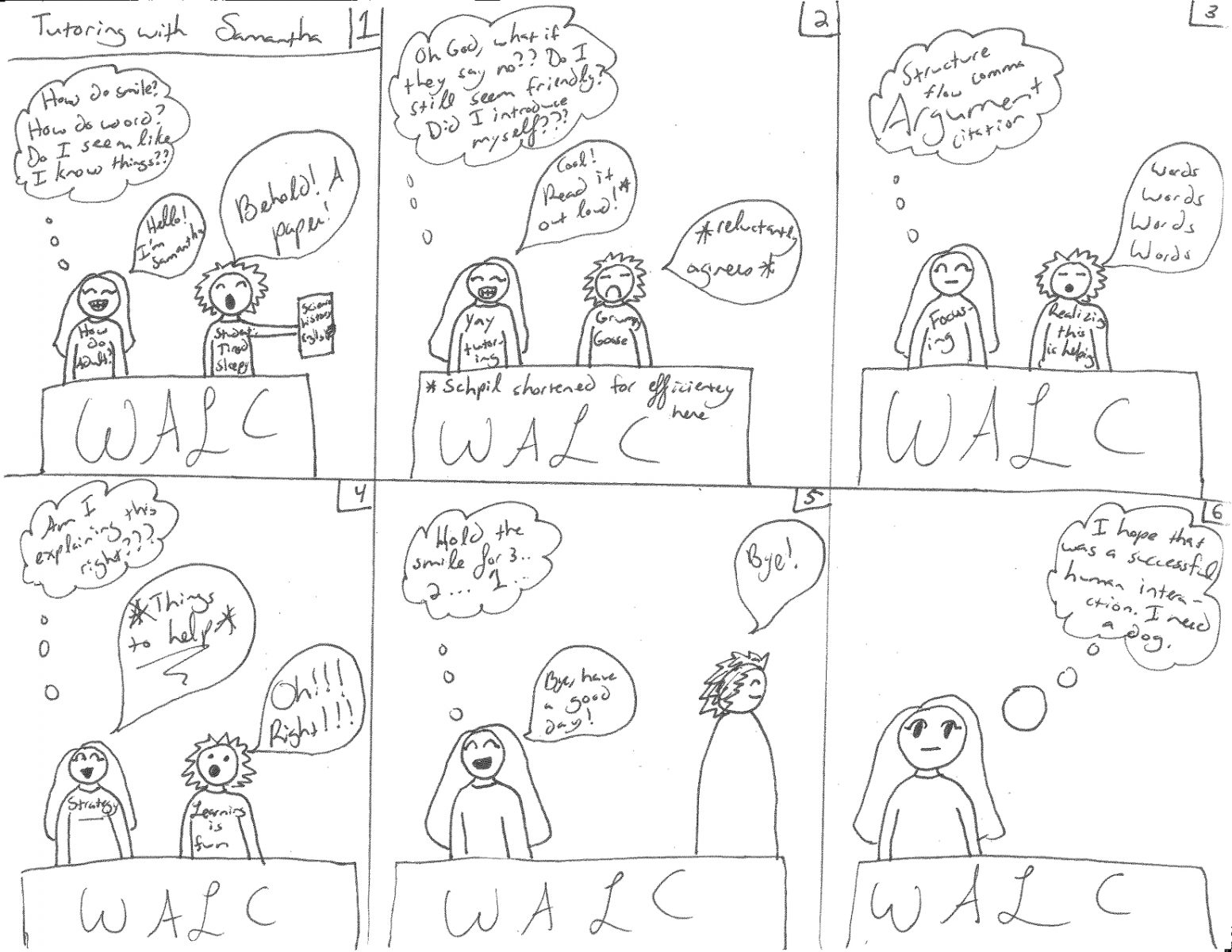By Margaret Williams, Teaching Assistant, English Department, Western Carolina University
Let’s talk about commas. Punctuation. You know. Grammar. At Western Carolina University’s Writing and Learning Commons (the “WaLC”), we see many students who ask for help with “grammar” when the real focus of their anxiety is when to use a comma (or not).
Yes, I know I’ve violated the “rules” already. And I hesitate to call punctuation “grammar,” in the same sense that we talk about subject-verb agreement or those dang dangling modifiers. But a week or so ago, I read in The New Yorker how the lack of a comma saved the day:
“The case of the Maine milk-truck drivers who, for want of a comma, won an appeal against their employer, Oakhurst Dairy, regarding overtime pay (O’Connor v. Oakhurst Dairy) has warmed the hearts of punctuation enthusiasts everywhere, from the great dairy state of Wisconsin to the cheese haven of Holland.”
The omitted comma cost Oakhurst Dairy about $10 million dollars, says the magazine’s “Culture Desk” writer, Mary Norris. She notes our love-hate relationship with punctuation, specifically what grammarians call the Oxford or serial comma. Most newspapers drop the last comma in a series, per Associated Press Stylebook guidelines. But The New Yorker “deploy[s] the serial [or Oxford] comma, along with lots of other lip-smacking bits of punctuation, as a bulwark against barbarianism,” says Norris. Witness a newspaper example that she provides:
“The next day, I enjoyed pan-roasted oysters with a tomato sauce over rice, broccoli salad and bread pudding with chocolate sauce.”
Pointing out the distasteful ambiguity suggested by the omission of the Oxford comma, Norris remarks, “A comma after ‘broccoli salad’ would have cleared the table before dessert.”
I agree. Just the same, I’m a recovering journalist, with more than 20 years’ experience at a newspaper where we routinely dropped the Oxford comma. Once, I got a phone call from a reader who was particularly upset about the absence of an Oxford comma in a phrase we had used on the latest cover. I don’t recall what the offending phrase was, but we talked for more than 30 minutes and, in the end, agreed to disagree.
These days, I’m ensconced in academia, so I have re-admitted the Oxford comma into my repertoire. But what about other uses for commas? The rules aren’t sacred, no matter how well we argue about them. Is there a wrong or right way to punctuate the following sentence?
(1) Slowly, he walked to the store.
(2) He walked, slowly, to the store.
(3) He walked to the store slowly.
I draw the above example from Peter Dawkins. In “Teaching Punctuation as a Rhetorical Tool” (1995), he suggests that we adapt new ways of helping students understand how to punctuate sentences and phrases. “Conventional punctuation is grammar-based—marks are prescribed in terms of grammatical structure—but what ‘good writers’ do … is punctuate according to their intended meaning, their intended emphasis,” says Dawkins. By “good writers” he means such greats as Annie Dillard, E.B. White, Joan Didion, E.M. Forster, George Orwell, and many others. Dawkins dubs Forster “the great comma splicer,” offering this example, which we would, undoubtedly, point out and correct if a student visiting the WaLC included such a merging of sentences in an academic essay:
“He could not stand the insecurities that are customary between officials, he refused to make use of the face-saving apparatus that they so liberally provide and employ.”
Such comma splices make me antsy, to say the least. I’ve corrected quite a few in my newspaper-editor days. But what if we follow Dawkins’ cue and, instead of playing punctuation pushers, help student writers understand how they can use punctuation for rhetorical effect? Here’s Joan Didion:
“I gravitated to the random. I swung with the non-sequential.”
She could have used a semi-colon, but the hard-stop of the period accents her point, says Dawkins. And, if I allow his notions about comma splices, Didion could just as well have separated these thoughts with a comma, simply to show less of a separation—or more of a close relationship—between them. Dawkins offers this example from E.B. White:
“The great days have faded. The end is in sight.”
“The great days have faded; the end is in sight.”
“The great days have faded, the end is in sight.”
Which level of punctuation did E.B. White use? He is one of the American writers most often included in essay anthologies. I can still recall a long-ago professor, charged with teaching us how to teach writing to freshmen, going gaga-eyes over White’s famous essay, “Once More to the Lake.” But White, you see, used a comma splice in the above instance, says Dawkins. The horror! Hmm.
In this meandering comma-fest, I’m sure I’m not doing full justice to Dawkins’ arguments, by the way. While he doesn’t talk directly about the ol’ Oxford comma, he clarifies that his suggestions don’t extend to times when we need punctuation to avoid confusion. Here’s the sentence, with its missing Oxford comma, that got the dairy company into millions of dollars of trouble:
“The canning, processing, preserving, freezing, drying, marketing, storing, packing for shipment or distribution of: (1) Agricultural produce; (2) Meat and fish products; and (3) Perishable foods.”
The lack of a comma after “shipment” is what proved costly. Fortunately, the possible implications of student-writers’ use of punctuation—or misuse, in our more practiced eyes—are rarely so serious. But give Dawkins a read. Consider how you, a more experienced writer, use punctuation for rhetorical purposes. Then ponder how you can help student writers say what they want to say, with just the right intent.
REFERENCES:
Dawkins, J. (1995). Punctuation as a rhetorical tool. College Composition and Communication, 46(4), 533-548.
